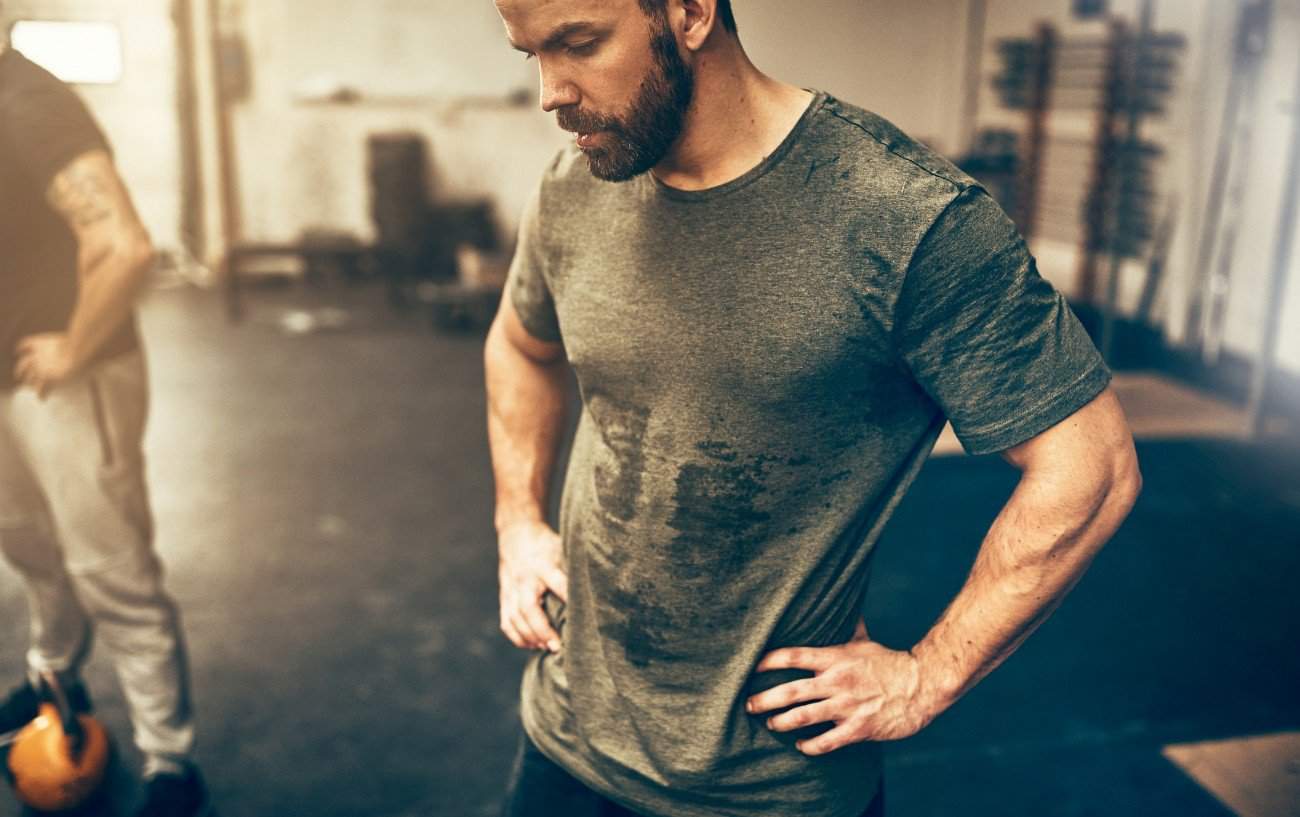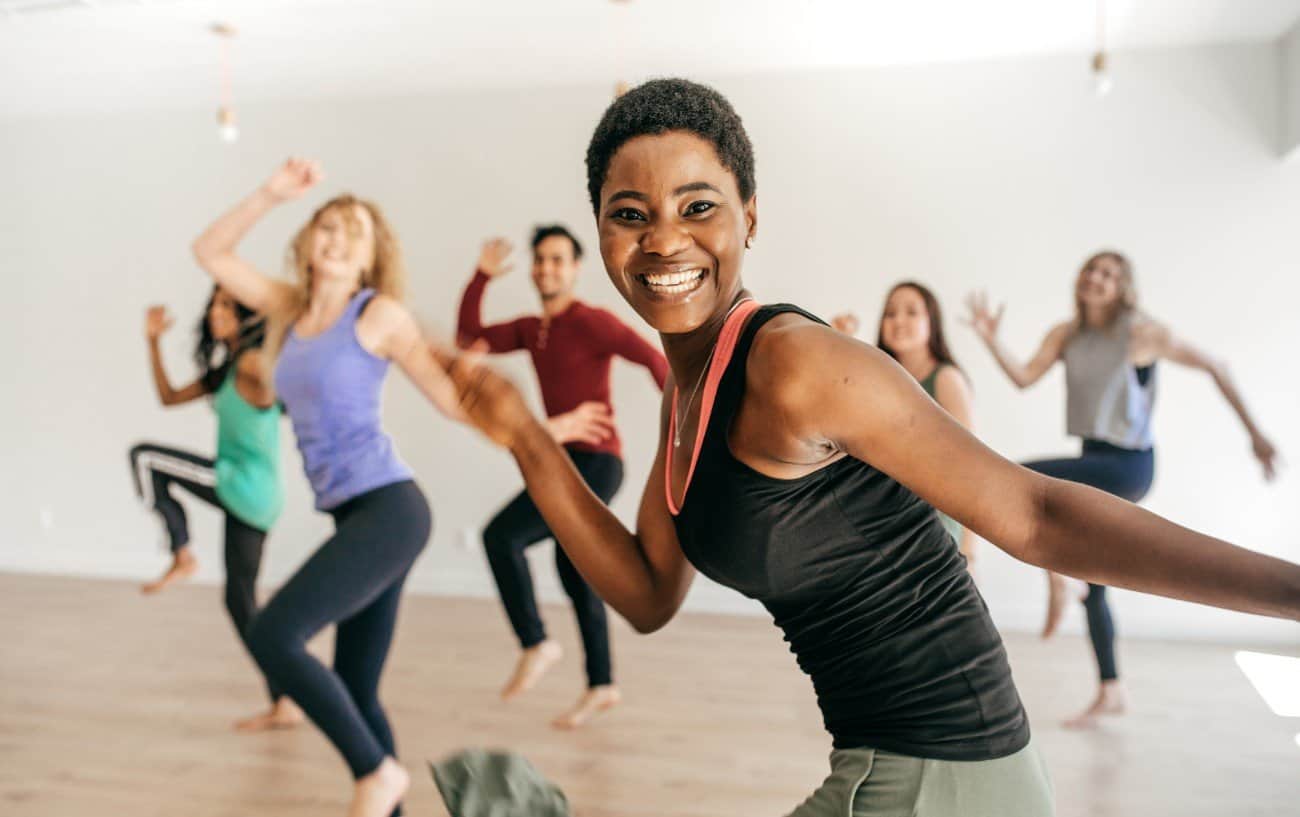Heel raises, also known as calf raises, target the calf muscles so that you can have strong calves for jumping higher, running faster, and doing all of your other favorite physical activities that use your legs.
They are also an important aspect of foot, arch, and leg strengthening. This means they are one of the best exercises for running injury prevention and are often a part of training plans and physical therapy programs.
Plus. well-defined, sculpted legs help you look and feel your best!
But, how do you do the heel lift exercise? What are the best heel raise variations? And how many heel raises should you do in your workouts?

What Are Heel Raises?
Heel raises, also called calf raises, standing heel raises, or the heel lift exercise, is any version of an exercise that involves pressing through the ball of your foot to lift your heel off of the ground by using your calf muscles.
The calf muscles are a group of two primary muscles that are located on the back of your lower leg.
Generally speaking, a calf exercise like a standing heel raise, seated calf raises, or heel raises off of a stair will involve primarily plantarflexion, which is the movement that occurs when you point your toes, such as standing up on your tiptoes.1Nunes, J. P., Costa, B. D. V., Kassiano, W., Kunevaliki, G., Castro-E-Souza, P., Rodacki, A. L. F., Fortes, L. S., & Cyrino, E. S. (2020). Different Foot Positioning During Calf Training to Induce Portion-Specific Gastrocnemius Muscle Hypertrophy. Journal of Strength and Conditioning Research, 34(8), 2347–2351. https://doi.org/10.1519/JSC.0000000000003674
Therefore, most of the calf raise variations involve some version of a “calf raise exercise” or “heel lift exercise,“ which is the exercise term used to describe pressing up onto your toes, lifting your body, or a load using your calf muscles.

How to Do Standing Heel Raises
You can do a standing heel lift or standing calf raise just standing on the floor, but it is best to perform standing calf raises off of a step. It is best to start by using both feet to lift your heels, which is known as a double-heel raise.
When you perform the heel lift exercise off of a step, you place just the ball of your foot on the step with your heel unsupported, hanging off of the back of the stair.
This allows your heels to extend down below the level of the step, which increases your range of motion and elongates the eccentric portion of the exercise.2McMahon, G. E., Morse, C. I., Burden, A., Winwood, K., & Onambélé, G. L. (2014). Impact of Range of Motion During Ecologically Valid Resistance Training Protocols on Muscle Size, Subcutaneous Fat, and Strength. Journal of Strength and Conditioning Research, 28(1), 245–255. https://doi.org/10.1519/jsc.0b013e318297143a
The eccentric, or lengthening, contraction is thought to help build muscle mass and strength more efficiently than the concentric, or shortening, contraction of an exercise.3Hedayatpour, N., & Falla, D. (2015). Physiological and Neural Adaptations to Eccentric Exercise: Mechanisms and Considerations for Training. BioMed Research International, 2015, 1–7. https://doi.org/10.1155/2015/193741
Therefore, a standing calf raise off of a step will be a better way to efficiently strengthen your calf muscles and build mass in your calves faster and in a more balanced manner across all of the muscle fibers in the calf muscle group.

How to perform a standing calf raise off a step:
- Stand at the edge of a step, curb, or box with the ball of your foot or balls of both feet on the step.
- Use your calf muscles to press through the balls of your foot so that you raise up onto your tiptoes.
- Pause at the top position for 2 to 3 seconds, squeezing your calf muscles.
- Slowly lower all the way back down, extending beyond neutral so that your heels dip below the level of the step as deep as you can stretch.
- Pause again for 1 to 2 seconds, feeling the elongation and stretch throughout the calf muscle group and your Achilles tendons.
- Press through the balls of your feet to lift all the way back up onto your toes as high as you can as you move into the next rep.
Beginners can start the standing heel lift exercise just on the floor without using a step, but as you get stronger, progress to a step and hold on lightly for balance if need be.
Then, as you get continually stronger, start to hold a dumbbell or kettlebell in one or both hands or wear a weighted vest to add resistance.

How Many Heel Raises Should I Do?
Heel raises, like any strength training exercise, can be used to increase the strength in your calf muscles, build muscle mass in your calves (known as hypertrophy), or increase muscular endurance in your calves.
When you want to do calf raises to increase strength, this means that you want to increase the maximum load that your calf muscles can lift or press when you contract your calves (stand on tiptoes or point your toes away from you in a seated position).
When you are performing heel raise exercises to increase strength, build up to doing 2-6 sets, 3-5 reps per set, and use at least 85% of your one-repetition maximum (1RM) for the load.
The fewer number of reps you perform, the closer to 100% of your 1RM you should aim for with your weights.
In cases where your goal is hypertrophy (muscle growth for the calves), try to perform three sets of heel lift exercises, using loads that are 70 to 85% of your 1RM for 8 to 12 reps.

Finally, you can perform standing heel raises, standing heel lifts, or other variations of calf raises exercises to increase muscular endurance.
Heel raise workouts for muscular endurance are beneficial for runners, hikers, long-distance walkers, cyclists, etc., who perform endurance exercises under lower loads but need their calf muscles to have good stamina for long aerobic workouts.
When you are performing heel lift or calf raise strengthening exercises to increase muscular endurance, you want to do longer sets of a minimum of 15 to 20 reps with heel lift exercises, working up to 3 to 4 sets with minimal rest in between each set.
Use lighter weights, usually approximately 60 to 65% of your 1RM.
3 Variations of Heel Raises
Aside from the basic standing heel lift exercise or calf raise exercise, there are different calf raise variations and modifications to target different muscle fibers and progress the exercise as your strength improves.
Here are some of the best heel raises variations:

#1: Single-Leg Heel Raises
Progress to performing this as a single-leg exercise by hooking one leg behind the calf of the other leg. Beginners can start with both feet on the step at the same time.
#2: In, Out, Center Heel Raises
According to research, you can better target each of the two heads of the gastrocnemius muscle along with different fibers of the underlying soleus muscle when you change your foot positioning with heel raises.4Arnsdorff, K., Limbaugh, K., & Riemann, B. L. (2011). Analysis of Heel Raise Exercise with Three Foot Positions. International Journal of Exercise Science, 4(1), 13–21. https://www.ncbi.nlm.nih.gov/pmc/articles/PMC4738962/
Rather than just performing heel raises with your toes pointing straight ahead, this multi-part variation has you angle your feet outward and then inwards to isolate the workload on different portions of the calves.
You can perform this standing heel lift exercise in the gym, but it’s also great for at-home workouts when you don’t have access to weights because you can work on your calf muscle endurance by fatiguing all of the muscle fibers with numerous sets of each calf raise exercise variation.
For the in and out heel raises, angle your toes about 30° to the inside or outside for each of the two modifications.

Beginners can perform this as a bodyweight standing heel raise exercise with both legs working together at the same time.
Progress to performing single-leg calf raises in each of the three positions.
Here are the steps for this trifecta of standing heel raises:
- For your start position, place the balls of your feet on the edge of a step or platform with your heels hanging off. If you are strong enough, stand on only one leg and hook the other leg behind the working leg.
- Perform calf raises by pressing powerfully through the ball of your foot to lift up onto your tiptoes as high as you can.
- Pause and hold the top position for 2 to 3 seconds, contracting your calf muscles.
- Slowly lower all the way down until your heel has dropped well below the level of the stair and you have a good stretch in your calf muscle.
- Perform at least 12 reps with your toes facing forward (depending on if you are using weights, a single leg, both legs or what your strength training goal is).
- Then, perform the same heel lift exercise with your toes pointing inward about 30 degrees so that you are pigeon-toed.
- Complete all of your reps based on your goals and fitness level.
- After that variation, perform the same exercise with your toes pointing outward about 30 degrees as if you are duck-footed.
- Complete all of your reps.
All three calf raise variations together constitute one set, so you will want to perform 2 to 3 sets of all three versions, particularly if your goal is increasing muscular endurance in the calves.

#3: Machine Standing Calf Raises
If you have access to the standing calf raise weight machine at the gym, it is a good tool to use with heel raises workouts to build strength and muscle mass.
The exercise is performed the same way, but the design of the machine allows you to work through a large range of motion and load up the exercise with a lot of weight to maximize your gains.
Remember to build up and progress gradually, especially if you are new to strengthening your calves.
Check out our guide on the Best Calf Stretches For Runners to loosen up tight calf muscles today.

Is It Safe To Do Heel Raises After A Leg Or Ankle Injury?
Heel raises are sometimes incorporated into physio injury-recovery routines by physical therapists.
However, you should speak to your physiotherapist or a healthcare professional before doing this to determine whether it is suitable for you.












